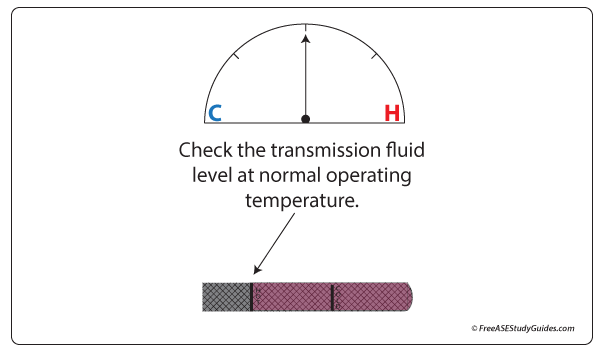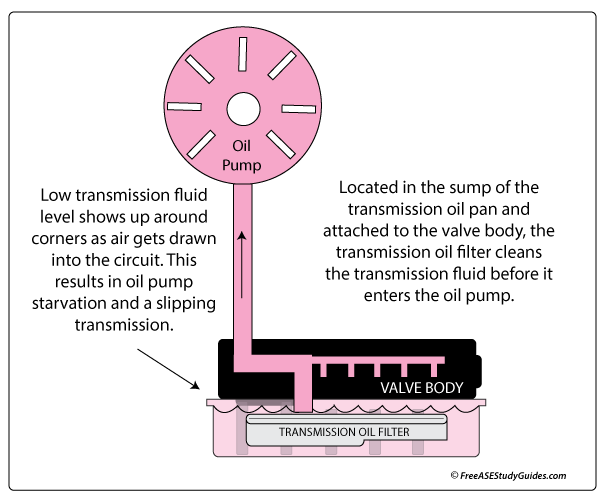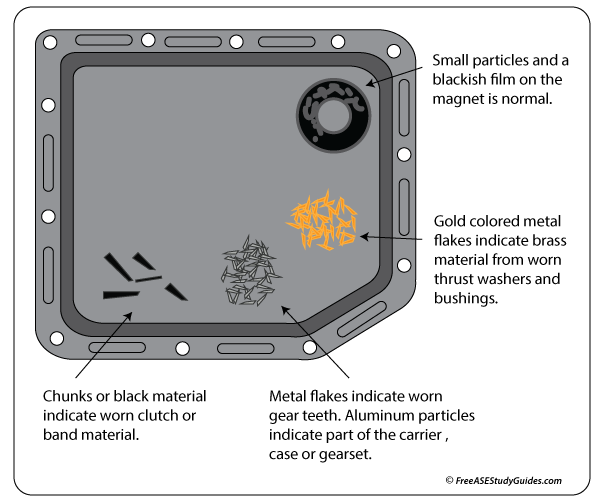Transmission Fluid Level and Condition

Automatic transmission fluid (ATF) level and condition are monitored and serviced at regular intervals. Check the fluid levels before test driving or beginning diagnosis. Bring the engine and the transmission to its operating temperature. If transmission fluid leaks from the vent or dipstick, check the fluid temperature with a scan tool by viewing the (TFT ) transmission fluid temperature sensor. Check with the vehicle manufacturer's specifications. It's likely somewhere between 175° F and 200° F.
Low Transmission Fluid Level

If the level is low, the fluid will become aerated and foamy. This condition is especially noticeable while cornering or going up and down hills. The pump is sucking air up into the oil pump inlet. Because air is compressible, aerated fluid results in low fluid pressures and delayed gear engagement, buzzing and malfunctioning valves, and slippage between shifts.
If the level is low, check for exterior leaks.
Check: Cooler and lines - Axle Seals- Torque converter shell - Oil pump seal - Switches - Vehicle Speed Sensor - Extension housing seals - Case porosity.

Examine the condition of the fluid while checking its level. Use a piece of paper towel or a lint-free cloth. Automatic transmission fluid should be red. Only a few manufacturers leave the dye out. Pink and milky transmission fluid indicate cross-contamination.
Debris in the Oil Pan

Overheated fluid appears dark brown or black, turning the dipstick a tarnished brown. Overheating the transmission fluid results in oxidation and dramatically reduces its lifespan. Pieces of black particles in the fluid indicate slipping friction material. Wearing metal components results in silvery metal pieces in the fluid.